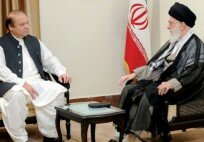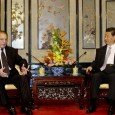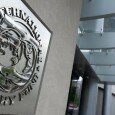By Ali Khizar –
An economic comparison between India and Pakistan
They may have a multitude of differences, but one thing that Nawaz and Modi have in common is their business friendly approach. Their star performance in their respective states (PML-N in Punjab and BJP in Gujarat) has led to landslide victories through the electoral process. The voters’ stamp on the ‘tiger’ in Pakistan and the ‘lotus flower’ in India were reflective of the hope that these parties would create an economic turnaround in their countries.
The economy of Pakistan had plunged into an abyss in the last half-decade or so, commonly attributed to the rising incidents of terrorism as well as alleged corruption by the last government. The economic growth was restricted to the population growth rate while inflation was uncontrolled.
In the case of India, the picture is less hazy, but the country has certainly fallen from its high growth trajectory to below 5 percent GDP growth in the past two years, with approximately 10 percent inflation rate. The policy response by both the new regimes is to create more fiscal space and entice foreign investment to generate enough economic activities to crowd-in the domestic investment.
The investment to GDP ratio in India reached a multiyear low of 31.4 percent (FY14) as compared to 35.4 percent in the past eight years, while the savings are hovering around 31 percent of GDP.
The fall in investment last year gave some respite to investment-savings gap, which had earlier widened the current account deficit (CAD) to 4.7 percent of GDP in FY13 and tamed down to 1.7 percent of GDP last year. However, this current outcome is not desired as CAD has shrunk due to falling investment instead of a boost in savings.
The theory of running a low Current Account Deficit at home is no different, as the fall in investment has shrunk the saving-investment gap, hence lowering the CAD in Pakistan. The stark difference is due to quantum of investment, as the country’s investment to GDP ratio is at an abysmally low level of 14 percent in FY14, while the savings stood at 12.9 percent.
The much lower savings at home are indicative of where we went wrong in the past three decades, while India (where people save more than double of what we do) has uplifted the country into a high growth trajectory.
India gradually opened up its virtually closed economy in the 90s and moved up the ladder of growth through the influx of foreign investment. It is currently going through a second phase of opening up, with more liberal policies for luring foreign investment and expediting privatization of state owned assets. Pakistan is struggling to do either. What goes in our favour is the changeover from an alleged corrupt government to an investment friendly government, which can act as a catalyst for much needed foreign money to flow in.
More importantly, the global environment is much suited for capital to flow into developing economies. The world is recovering from recession, at least for the time being, as all the monetary and fiscal stimuli run in the past few years have started paying dividends for emerging economies. The capital appetite for developing economies is increasing and junk bonds are easy to sell nowadays.
Both the countries are eying this opportunity, and have announced a clearance sale of state owned assets. Modi’s government is expecting to raise $13 billion from assets sales in FY15, while Pakistan’s proceeds from privatization are budgeted at $2 billion. The plans are similar relative to the size of economies, as Pakistan’s economy is one seventh of its counterpart.
Over time, Pakistan has descended deep into security issues, shooing away potential investors. Its FDI-to-GDP ratio of 0.6 percent was less than a half of India’s in 2013, as per The World Bank. Ever wondered why Pakistan keeps running to the IMF incubator every now and then, while India is a net lender to the fund? Well, even Pakistan’s current “stellar” Forex reserves are less than 5 percent of India’s $315 billion. Despite the large gap in foreign reserves and investment across the border, big flows in the coming couple of years are imperative for relative revival of both the economies.
The foreign investment is to be complimented by mega infrastructure projects through development budget. India has the luxury to spend more on development as India’s planned expenditure (development) is envisaged at 32 percent of GDP (60% of it is assistance to states) in FY15, while here the federal government would, at best, spend 20 percent. In addition, in India, the combined states’ development expenditure, in terms of GDP, is three times as high as what the provinces are spending here. This implies that achieving the growth range of 5.4-5.9 percent of GDP from 4.7 percent this year in India is more plausible than Pakistan’s target of 5.1 percent.
The Indian government surely has more fiscal space than us, which is evident by the way their expenditure is distributed. The total outlay in both the countries is around 14 percent of their respective GDPs. However, in Pakistan the tilt is more on non-productive current spending. Debt servicing and defense services are budgeted to consume 91 percent of net revenue receipts at home, while our neighbors are spending a mere 47 percent on it.
That is why India has much more room to run subsidies, which are budgeted at 22 percent of revenue receipts compared to only 9 percent by Pakistan. It is no wonder then that the Indian farmer is much more supported by the government than the Pakistani farmer. The opening of the border under the current scenario could be detrimental for the growers at home.
The pro-business Modi government is moving away from its predecessor’s policies of paying handouts to its conventional vote bank, which is poor and rural-based. These include food stamps scheme and guaranteed rural employment. Nevertheless, concerns of low monsoon rains and rising environmental temperatures may compel the Indian government to maintain or even increase these allocations in the next budget if the food security situation worsens.
The Nawaz Sharif government attempted to do the same at home last year by shirking BISP and PPAF. Later, however, it continued with social safety net programmes upon IMF’s observation. With virtually half of the population in both countries poor on many multidimensional accounts, it is of utmost importance for the state to fulfill the basic needs of tens of millions poor citizens.
India expects federal taxes to grow by 17 percent in FY15, which seems to be a little too optimistic, given that last year’s target was missed by 6 percent. The federal tax-to-GDP ratio is around 10-10.5 percent of the GDP. That is similar to us, as Pakistan’s federal tax collection is projected at 9.7 percent of GDP in FY15. However, in India the contribution of direct taxes is higher – direct taxes are 54 percent of total tax budgeted in FY15 in India, whereas in Pakistan the ratio is 42 percent. The big difference is in states’ collection, which separates the two countries. Indian states collect 6-7 percent of GDP though taxes, while here at home the ratio is below 1 percent.
This implies Indian overall tax to GDP ratio at 16-17 percent, which is much higher than ours at 10-10.5 percent. The reason for this variation is simple, as in India there are more than 30 million active tax payers, while here less than a million people pay taxes. Adjusting for population, tax density in India is around 5 times that of Pakistan. Unless we as a nation realize the importance of paying taxes, a sustainable growth momentum will remain elusive.
The writer is head of research at Business Recorder and can be reached at [email protected]































































































